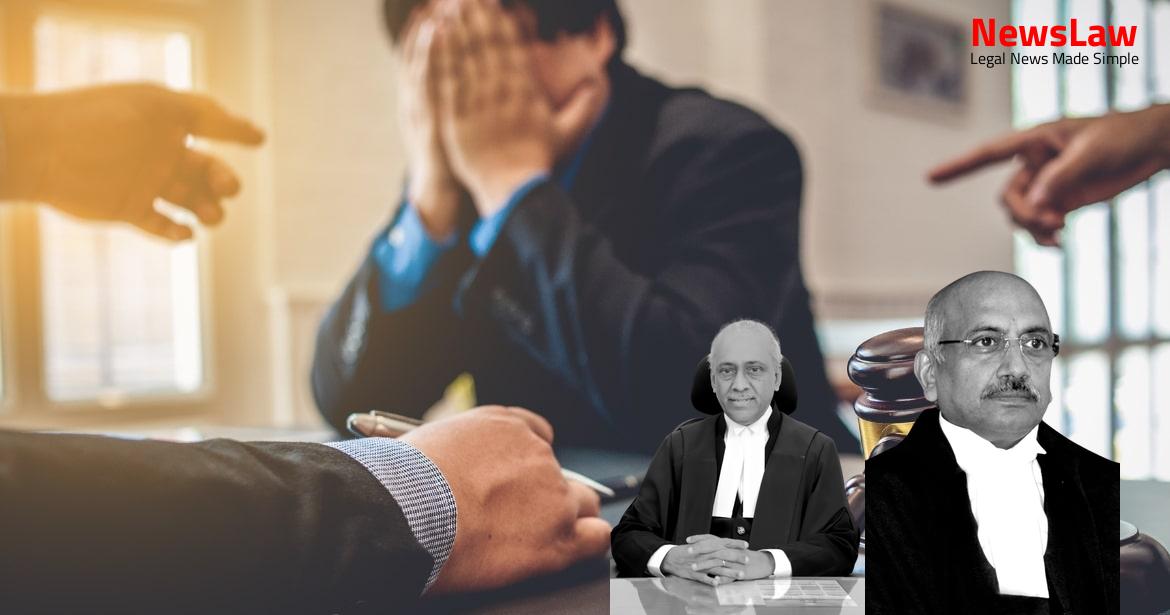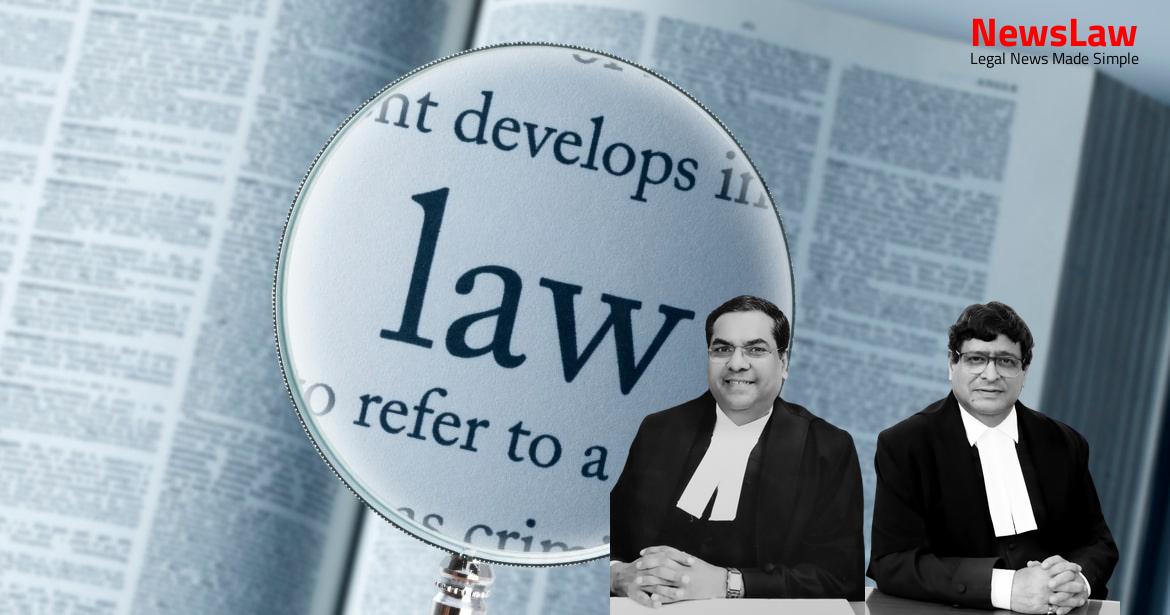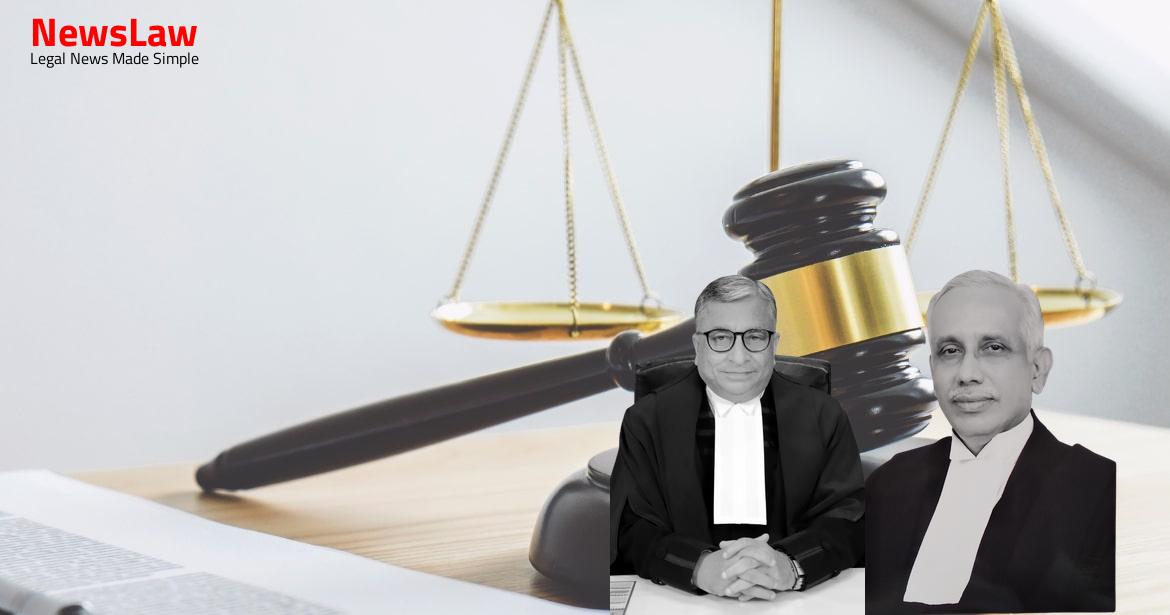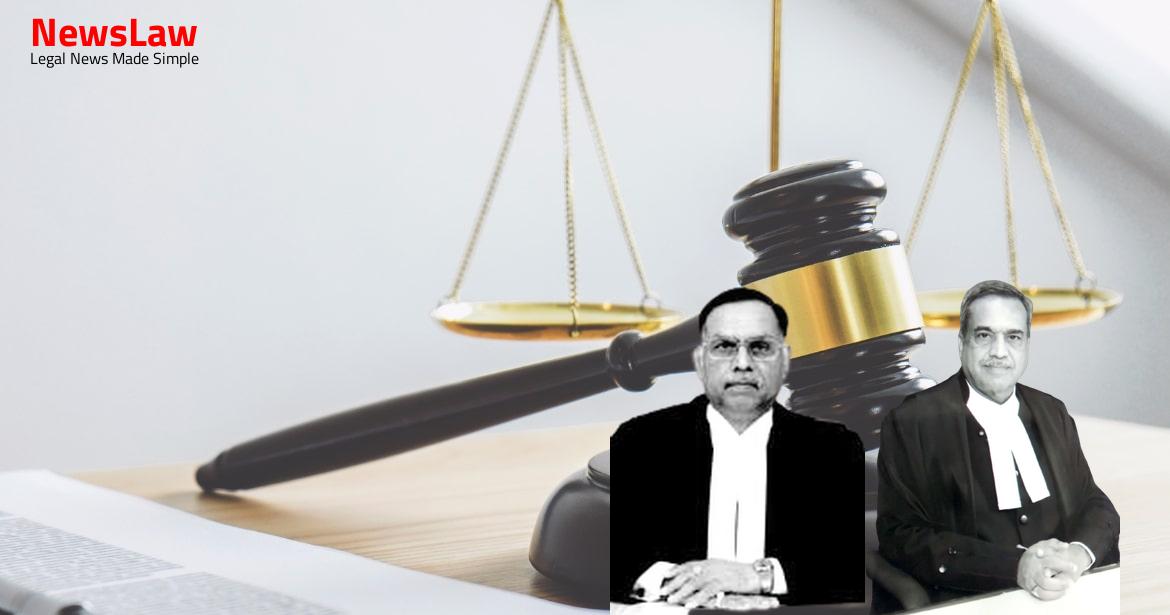In a recent legal case, the court delved into a detailed legal analysis regarding a disputed religious structure in a mining area. The expert committee’s findings revealed no historical or religious significance in the structure, leading to the dismissal of appeals challenging its status. This summary explores the court’s examination of evidence related to waqf declaration and its ultimate decision based on legal principles.
Facts
- A Committee chaired by Shri R.K. Sinha, along with other members, submitted a report on 10.1.2021 stating that the structure at Khasra No 6731 is neither a mosque nor of historical relevance.
- Shri A.K. Nandwana partially dissented from the report, emphasizing the need to stop illegal mining.
- The writ petitioner was granted a lease for mining in Bhilwara, Rajasthan.
- A report from the Tehsildar indicated a place of worship in the mining area of Samodi village.
- The Anjuman Committee was involved in misinterpretations leading to legal actions and recoveries.
- The High Court ordered that the structure in Khasra No 6731 not be interfered with during removal.
- Survey reports indicated proposed mining permissions and restrictions near religious places in different villages.
- Concerns were raised about the Qalandari Masjid in Survey Number 931 and the related mining proposal in Land Survey No 235.
- The High Court constituted an Expert Committee to examine specific questions regarding the case.
- The first question examined by the Expert Committee was related to the issue of RLC.
- The Expert Committee’s findings and analysis on RLC were presented in this section of the judgment.
Also Read: Landmark Judgment on Compensation for Fatal Accident
Arguments
- Mr. Ranjit Kumar and Mr. C.S. Vaidyanathan argued that Survey No 931, where the structure is located, was not part of the lease given to the petitioner for mining work.
- There was no evidence to show that any part of Survey No. 6731, which was leased to the petitioner, was declared as a religious structure as defined under the Waqf Act.
- The report assessing the value of the waqf had no survey number but indicated the purpose of use for Namaaz.
- Dr. Manish Singhvi, representing the State, stated that the determination of whether the area was suitable for mining activity was the responsibility of the State Government as per the lease agreement.
- The question of whether the structure was a waqf or not should be decided by the Waqf Tribunal according to the Act, not in a writ petition.
- Photocopies of documents were presented claiming the Tiranga Qalandari Masjid to be a mosque, hence challenging the mining activity.
- Documents showed the declaration of Qalandari Masjid as waqf property and its religious purpose of offering prayers.
- The State Government concluded that mining was not permissible on Survey No. 6731 as per the relevant conditions of the lease.
- An expert committee report suggested that the structure on Tiranga Hill was not a religious structure, but the appellant argued against this report as they were not involved in its preparation.
- The photographs show the structure is dilapidated without a roof, with only a wall and broken platform remaining.
- The area is surrounded by vegetation, inaccessible, and lacks facilities for prayer.
- The identification of the structure by revenue officials years before the dispute raises a presumption of correctness.
- Lands for graveyard and religious structures were excluded from the lease, indicating no religious value for the structure.
- The claim of the appellant is deemed untenable as no revenue record shows a religious structure on the land in question, which is in Survey No. 6731.
- The religious structure is stated to be in existence over Survey No. 931.
- There is a discrepancy in the area size of the religious structure as per the appellant’s record and the second survey report.
- Experts from the Archaeological Department reported that the structure has no historical or archaeological importance.
Also Read: Land Acquisition Compensation Analysis
Analysis
- Dilapidated wall or platform cannot be considered a religious place without proof of dedication or user.
- No evidence to support the claim that the structure was being used as a mosque.
- Absence of dedication, user, or grant that could classify the structure as a waqf.
- Expert report states the structure has no archaeological or historical significance.
- Lack of proof that Survey No. 931 is changed to Survey No. 6731.
- State Government’s identification of the structure as a religious one in Khasra No. 6731 not provided in the record.
- The appeals were found to be lacking in merit.
- There is no evidence that a decision, if any, was made after involving the writ petitioner.
- The State, as the lessor, has the authority to exercise powers granted in the lease deed as long as it follows natural justice principles and has valid reasons.
Also Read: Judicial Review of Search and Seizure Authorization
Decision
- The appeals have been dismissed.
- The decision of the lower court stands.
- No further action will be taken.
Case Title: WAQF BOARD, RAJASTHAN Vs. JINDAL SAW LIMITED (2022 INSC 493)
Case Number: C.A. No.-002788-002788 / 2022



